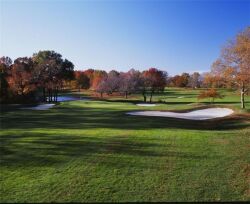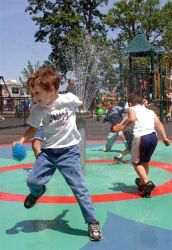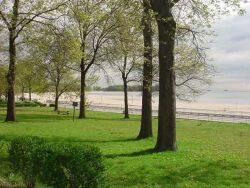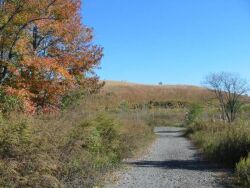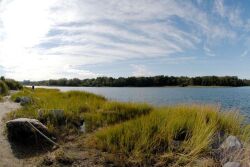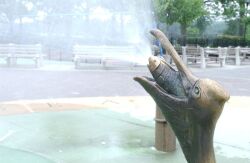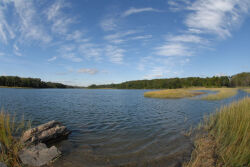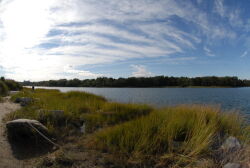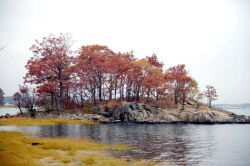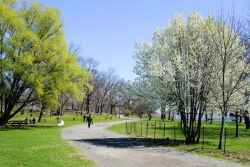Pelham Bay Park
Bartow-Pell Mansion
This historic house stands on a tract of land in Pelham Bay Park that was purchased from the Siwanoy Indians in 1654 by Thomas Pell, an English doctor of medicine who had settled in Connecticut. The original acquisition, encompassing much of what is now Pelham Bay Park and part of the County of Westchester, became the Manor of Pelham in 1666 when a land grant was issued to Pell by Richard Nichols, the first English Governor of New York. The original house, completed in 1670 by Pell’s nephew, Sir John Pell, was destroyed during the American Revolution.
Robert Bartow, a publisher and Pell descendant, purchased the estate in 1836. He undertook to build the elegant gray stone mansion whose Greek Revival interior featured a free-standing spiral staircase, a high-ceilinged double parlor and floor-to-ceiling windows on the second floor. The property remained in the family’s possession until 1888, when it was sold to the City.
The house served briefly as a Home for Crippled Children, but by 1911 had been abandoned. In 1914 the house was restored and the sunken garden was added by the noted architectural firm of Delano and Aldrich. The mansion served Mayor Fiorello H. LaGuardia as a summer office in 1936. It was opened as a public museum in 1947. The building, with its sweeping view of Long Island Sound, is the only surviving estate out of more than two dozen that once overlooked Pelham Bay. The carriage house was restored and opened to the public in 1993.
The house and grounds have been designated New York City and National Historical Landmarks. They have been operated by the International Garden Club since 1914. The property is one of the 19 historic houses located in city parks which the Historical House Trust of New York City helps to support.
The Bartow-Pell Mansion stands within the bounds of Pelham Bay Park, the largest property in the City park system. Its 2,764 acres are bounded on the north by Westchester County, on the east by City Island and Long Island Sound, on the south by Watt Avenue and Bruckner Boulevard, and on the west by the Hutchinson River Parkway. Acquired by the state legislature in 1888 at the prodding of the New York Park Association, the park now includes many active recreational amenities like Pelham Bay Golf Course (1914), Split Rock Golf Course (1936), Orchard Beach (1936) with its public bathing facility, ballfields, and tennis courts. The Thomas Pell Wildlife Sanctuary and the Hunter Island Marine Zoology and Geology Sanctuary, established by local law in 1967, protect 489 acres of marshes and forests within the park.
Check out your park's Vital Signs
Clean & Safe
Green & Resilient
Empowered & Engaged Users
Share your feedback or learn more about how this park is part of a
Vital Park System

Know Before You Go

Contacts
Pelham Bay Park Administrator's Office: (718) 430-1891
Bartow-Pell Mansion Museum: (718) 885-1461
Park Enforcement Patrol: (718) 430-1815
Pelham Bay & Split Rock Golf Course: (718) 885-1258
Turtle Cove Driving Range: (718) 885-2646
Orchard Beach Nature Center: (718) 885-3466
Urban Park Rangers: (718) 548-0912
Events and General Parks Information: 311
Bronx Equestrian Center: (718) 885-0551
Friends of Pelham Bay Park: (718) 430-4685
Bronx Recreation: General Information: (718) 430-1825
Bronx Recreation: Special Events Permits: (718) 430-1848
Bronx Recreation: Sports Permits: (718) 430-1840
Bronx Recreation: Tennis Permits: (718) 430-1848

